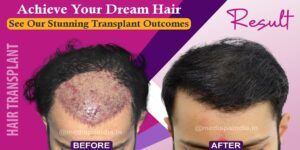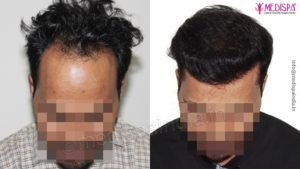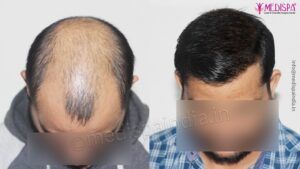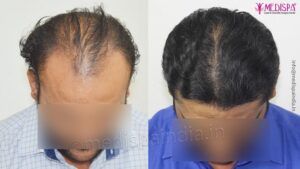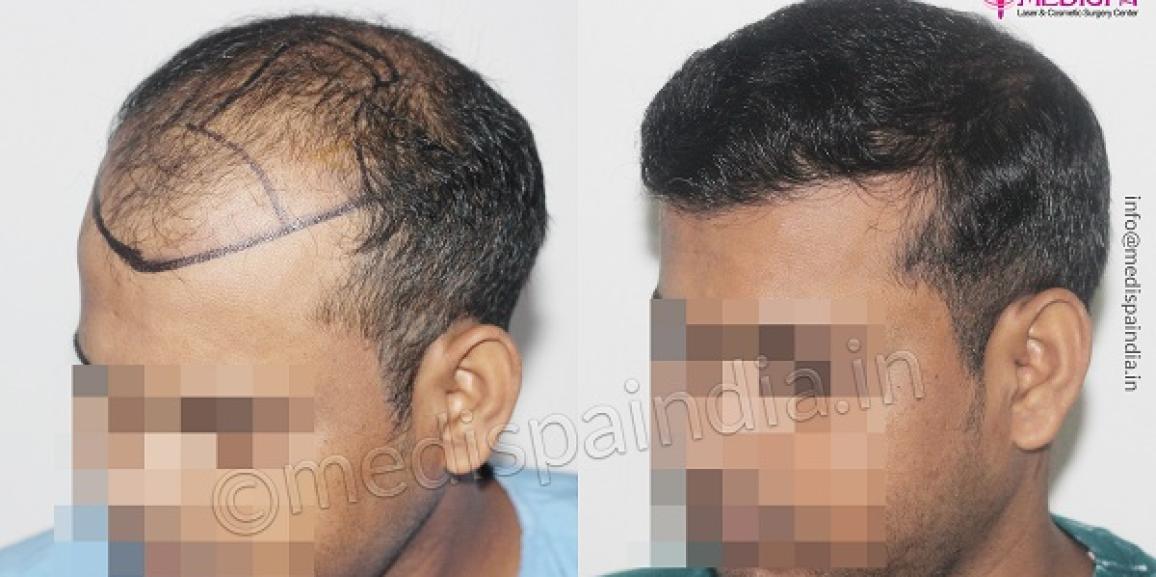
Given how frequently the words “surgery” are used together, pain is the first thing that comes to mind when you hear them. Every medical procedure vividly evokes feelings of suffering and anguish.
The same is true with hair transplant surgery; people usually hesitate to utilize it as a hair loss treatment because they expect to be in excruciating pain while having the operation.
That which you worry is unfounded, we can assure you.
Modern hair transplant procedures have substantially improved, and they are designed to be painless from start to finish. Why are you holding out? Visit the Medispa hair transplant clinic, where the most modern innovations are used to perform every procedure to assure your comfort.
A painless hair transplant technique was previously just a fantasy. Thanks to recently developed technical processes, we may benefit from a painless treatment with the greatest results and a natural appearance following a hair transplant. So, be proud of yourself for being able to manage your hair loss and maintain a young appearance.
As hair transplant has been more widely used as a therapy for hair loss, more people are choosing hair transplant in Lucknow as a permanent alternative. Delhi and Jaipur are two of the best locations with the highest caliber doctors, drawing patients from all across India, including Lucknow, for their hair transplants. People still come to Jaipur and Delhi for hair transplants despite the fact that the hair transplant cost in Lucknow has fallen because to the high caliber of treatment provided there.
Hair transplant
A hair follicular graft collecting procedure, it involves preparing the grafts for implantation before implanting them. Following the creation of the follicular grafts, the recipient location for baldness is prepared by slicing, and the recovered grafts are implanted there.
The steps in hair transplanting are as follows:
- Arrange the patient’s initial consultation to assess if a hair transplant is practical.
- Before the surgery starts, local anesthesia is given both at the donor and recipient locations.
- Depending on the density of hair follicles that are accessible, grafts are collected from the donor spot, which may be the back, side, or any other area of the body.
- According to the cosmetic needs of the treatment, the implantation site is slit.
- Inserting hair follicles into the slits in the recipient region.
- Extensive guidelines for postoperative treatment
- Shampoo your hair 24 hours after the procedure to promote healing.
Hair transplant techniques:
When doing aesthetic hair transplant surgery, two modern techniques are employed, and they differ depending on how the hair is harvested. These techniques include:
The strip process often referred to as FUT (Follicular Unit Transplantation) Hair transplant: A little strip is removed and then given to the graft separation chamber during a FUT hair transplant. Usually, the side and back of the head are used for this strip. These gathered individual grafts are then inserted into the recipient’s bald area. Due to the small size of the hair transplants, using magnification might lessen damage to them. As a result, every step should be completed with a high loop magnification.
Follicular unit extraction (FUE) hair transplant: Individual grafts are removed from the scalp using a surgical punch.
Reasons for scars after hair transplant
You cannot anticipate a scar-free procedure because scarring is a natural part of hair transplant surgery, just like it is with all surgeries. In perfect conditions, scarring that is nearly imperceptible is undoubtedly a possibility. What results in severe scarring?
- The most frequent reason for severe scarring following a hair transplant is the employment of outdated methods and equipment.
- The surgeon’s lack of training
- The surgeon’s lack of experience and qualifications
Mantra to lessen post-hair transplant scarring?
Hair transplantation is thriving with fresh concepts and technology in the modern period, when every sector is enhanced with breakthroughs. Today, it is undoubtedly feasible to almost eliminate scars with the right procedures, modern technology, and skilled hands.
Let’s discuss in more depth how to lessen scarring following each hair transplant process.
Scarring following FUT hair restoration?
In a FUT hair transplant, the doctor cuts a 1.5–2 cm slice of skin from the donor location. To harvest individual hair follicles, this strip is divided into small portions and sent to the professionals. Strip harvesting from the donor area necessitates suturing at the donor location for painless healing; if improperly done, scarring will result. After being harvested from the donor locations, the hair transplants are implanted.
The donor region should be sutured using a modern technique called “Trichophytic closure” to prevent scarring. With this method, one side of the incision is beveled, and when they are close together, they overlap. As a result of the overlapping, nearly unnoticeable scars and even hair growth over the incision line are made possible.
Post-FUE hair transplant scarring?
In a FUE hair transplant, each hair graft is pulled out of the donor region separately using a punch-like tool that has a certain diameter. The punch is placed into the skin one at a time and pulled with the hair transplant. The greater number of hair transplants produced during the surgery might result in significant circular scarring. Therefore, it is crucial to carefully harvest the hair transplant from the donor area with extraction of each hair graft from a higher inter distance in order to make the scar nearly undetectable.
The improved punching tools have a reduced diameter, which almost eliminates the scar. Therefore, using the proper punch device size is crucial to reducing scarring.
How can scarring from a hair transplant be removed?
So now you are aware of how a skilled surgeon could reduce scarring after a hair transplant. But what if you’ve already had hair transplant surgery but still have scars from hiring an unskilled surgeon?
In situations when the patient is dissatisfied with the severe scarring after a hair transplant, scalp micropigmentation is used to conceal the scars. In scalp micropigmentation, pigments are applied in the shape of round dots to the scarred region. The process creates the appearance that hair is growing over the damaged region, totally concealing the scars.


